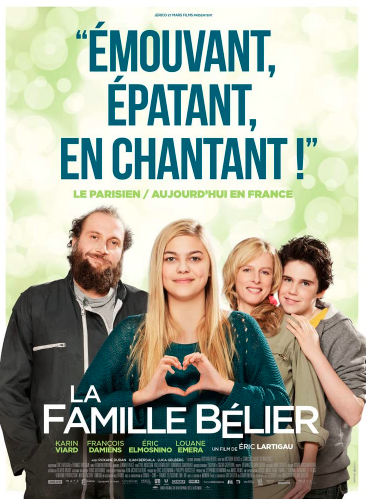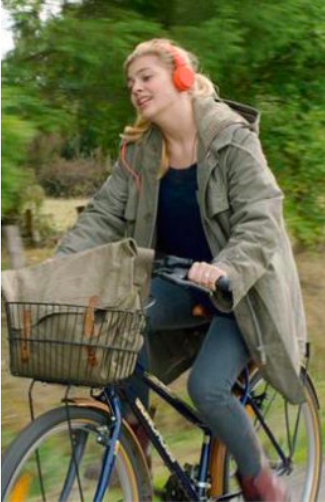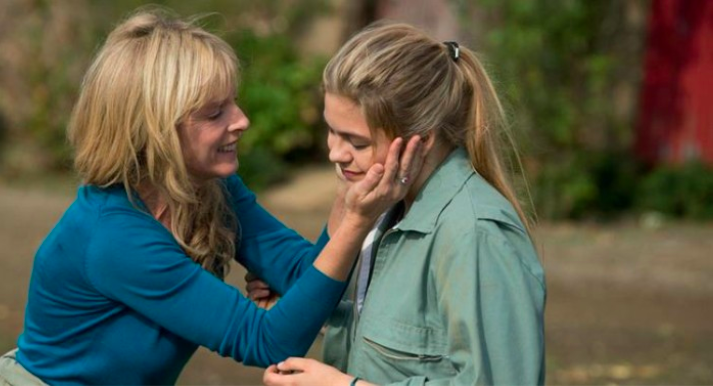CODA and La Famille Bélier — A great remake of a French ‘Feel Good’ film — Part 1


[Spoiler alert: This article reveals many plot details for each of these two films.]
If you are not yet aware that, against all odds, the independent, low-budget film CODA won the Academy Award for best picture, along with two more – for best-adapted screenplay and best supporting actor (Troy Kotsur), you probably paid too much attention to the Will Smith-Chris Brown “big slap” incident and failed to see who had won what.
CODA is the U.S. remake of a 2014 French film, La Famille Bélier, the latest in a long list of Hollywood adaptations of French movie hits – Wikipedia lists 105 of them.
Among those many remakes of French films, I’ll mention only three that most American moviegoers may know:
- The Birdcage (1996), the splendidly hilarious remake of La Cage aux Folles (1978),
- Three Men and a Baby (1987), based on Trois Hommes et un Couffin (1985), and
- The Upside (2017), a close-to carbon-copy of Les Intouchables (2011.)
The three remakes I just mentioned featured Hollywood actors at the height of their popularity, such as Robin Williams, Ted Danson, Tom Selleck, Brian Cranston, and Nicole Kidman. And it seems that if La Cage aux Folles and Three Men and a Baby were successful with the American public and critics, such was not the case for The Upside.
La Famille Bélier
Before focusing on CODA, we should take a glance at La Famille Bélier, whose plot focuses on a family of dairy farmers:
– Rodolphe Bélier, his wife Gigi, and their two children,
– Quentin (roughly 14 years old) and Paula (16 years old.)
– Rodolphe, Gigi, and Luca are deaf.
Being the only non-hearing-impaired individual in her family, Paula bears the huge responsibility of being her family’s interpreter in many situations, some related to the running of their farm, and others to their daily lives. Paula, who happens to have a wonderful singing voice, gets noticed by her music teacher who encourages her to audition for the Maîtrise de Radio France, a prestigious music school in Paris. Her parents are disconcerted and concerned:
– How will they be able to run their farm if they lose their trusty interpreter?
– Paula faces a tough dilemma: Can she leave her family to pursue a singing career when they are so dependent on her?

The idea for a movie script featuring a lone hearing child in a deaf family (referred to as“CODA,” i.e. Child of Deaf Adults) came from an autobiography titled Les Mots qu’on ne me dit pas (Words They Don’t Tell Me [note: my translation]), penned by Véronique Poulain, herself a CODA, a writer who happened to be the assistant of the famous French comedian and actor Guy Bedos.
It so happens that Véronique Poulain’s story caught the attention of Victoria Bedos (Guy’s daughter), a neophyte screenwriter who pitched the plot idea to a producer that she had met at a party. In an interview, Victoria Bedos mentions that because she had just come to the party from a singing lesson, she had thrown in the fact that her main character takes up singing, adding that she was glad that she had not just come from a swimming lesson on that day!
The producers made a decision that quite a few folks found questionable: They cast well-established actors – Karine Viard and François Damiens – and not deaf actors, in the roles of Rodolphe and Gigi.
For the role of Paula, the Director, Eric Lartigau, chose then 18-year-old Louane Emera, who had caught his attention as a contestant in the French version of The Voice in 2013. Only two actors in La Famille Bélier are deaf: Luca Gelberg, cast for the role of Quentin, and another actor who plays a minor role. Viard, Damiens and Emera, who did not know French sign language (LSF), were coached for the demands of their respective roles.
However, the casting of non-deaf actors was criticized by some people in the deaf community, on two grounds: Firstly, was it not possible to find deaf actors? And secondly, the hearing actors’ signing was flawed, especially that of Karine Viard, which was too fast and choppy, and so tough to understand that deaf people had to read the subtitles. In The Guardian, Rebecca Atkinson, who is deaf, wrote this:
The film uses hearing actors to play the roles of deaf characters, the result of which is an embarrassing and crass interpretation of deaf culture and sign language. Make no mistake, this is like blacking up for the Black and White Minstrel Show. Couldn’t find any deaf actors? Just get some hearing ones to wave their hands about. It shows a level of disrespect for deaf people and disregard for genuine language with the nuances of any spoken language.

Atkinson also felt that the theme of music and deaf people is beyond hackneyed.
The movie, she claims, wants you to believe that Paula’s parents are devastated because they will never be able to enjoy their daughter’s voice. Yet, she adds, not being able to hear music is nothing over which deaf people lose any sleep.
My thought, however, is that something is escaping Ms. Atkinson: the obvious fact that parents want to bask in their children’s achievements and are missing out if they cannot partake in them.
La Famille Bélier is, of course, deeply anchored in France and its popular culture. Early in the film, Monsieur Thomasson, the music teacher wonderfully played by Éric Elmosnino, assesses each choir student’s voice range by making them sing La Marseillaise.
He picks a repertory of songs by Michel Sardou – a singer highly popular with baby boomers – for the school recital. He does not hesitate to make the over-the-top statement that Sardou is “to French pop music what Mozart is to classical music.” He also makes passing references to several French singers popular in the 1970s: Stone et Charden, Mike Brandt, and Nicoletta.
It is interesting to note that the lyrics of the song that the music teacher picks for Paula and Gabriel’s duet, Je vais t’aimer, are rather suggestive, and would most likely be deemed inappropriate in an American high school setting. Another cultural difference is that in La Famille Bélier when the music teacher shows Paula how to breathe properly, he touches the upper part of her body quite a bit.
In contrast, in a similar scene in CODA, while Mr. V, the music teacher, teaches Paula about proper breathing, he keeps his distance from her. And when Paula and Gabriel’s singing is lackluster at first, Monsieur Thomasson makes them hold each other and pretend that they are slow dancing (a Stone & Charden strategy, by the way.) In CODA, the guitar that Miles plays to accompany his and Ruby’s singing serves as a physical barrier between the two teenagers.
That brings us to the fact that sex is omnipresent in La Famille Bélier. Rodolphe and Gigi obviously have a very active sex life, as suggested by the scene that takes place at the doctor’s office, where Paula serves as an interpreter for her parents, who are there because of a severe yeast infection affecting their genitals. When the doctor orders that they abstain from having sex for three weeks, the father responds with a resounding “no.” Later on, when Paula and her friend Mathilde are hanging out in her room after school, they can hear the noise of her parents going at it in their bedroom next door.
Mathilde is also quite the sex-crazed teenager, as is Quentin, who ends up teaching her LSF. For their lesson, he has created a romantic setting – dimmed lights and candles – and teaches her “breasts” and “nipples” in sign language, caressing her at the same time. They kiss and go further. The next thing we know is that Quentin is not feeling well and faints due to a severe allergy to the latex of the condom he had used.
Another subplot is the fact that Paula gets her first period while rehearsing her duet with Gabriel at her house. Gigi gets all excited and shows her daughter’s bloody jeans to the entire family, in Gabriel’s presence. The next day, the whole school ridicules Paula in the cafeteria, because Gabriel must have mentioned the period incident to his classmates. This angers Paula, who slaps Gabriel’s face.
La Famille Bélier also deals with Rodolphe and Gigi’s financial issues – they have a tough time paying their bills, and their interactions with their customers at the market where they sell their cheese, and with the locals, especially the mayor who epitomizes the self-serving local politician, are difficult. His strong dislike for the mayor leads Rodolphe to decide to run for the mayor’s office, even though he is deaf. Ironically, his slogan is “on vous entend” [“we hear you.”] The subplot of Rodolphe’s run for mayor is inexplicably abandoned later on in the movie, and only a photo of him wearing his tricolor mayor sash, shown as the ending credits are rolling, lets the audience know that he had won the election.
One fact that is stressed in the movie is the toll that her family’s reliance on her takes on Paula. The movie’s opening scene shows her working at the barn early in the morning, and then leaving for school – covering quite a distance on her bike to get to the school bus that gets her there. And, by the time she is in her Spanish class, she is so exhausted that she falls asleep on her desk.
Later, the private lessons that her music teacher gives her at his house are jeopardized by the fact that she is so busy helping her parents that she often arrives late. When she has to serve as the interpreter for an interview of her parents by a TV station interested in the fact that her father, a deaf man, is running for the mayor’s office, she is so late for her singing lesson that the teacher refuses to open the door.

Most French and Francophile folk who have seen La Famille Bélier will tell you that the two most powerful and touching scenes in the entire movie are the one when Rodolphe makes Paula sing her song for him and puts his hand on her throat to “feel” her voice, as well as Paula’s performance of Michel Sardou’s Je vole for her Radio France audition. And it is undeniable that Louane’s singing is absolutely wonderful. Sardou, who co-wrote the lyrics and composed the music for this song stated in his autobiography that it was about an adolescent about to commit suicide.
Victoria Bedos turned the song on its head and made it an anthem of emancipation and an expression of her protagonist’s desire to cut the cord from her parents. What makes this scene especially powerful is the fact that Paula begins signing the lyrics that she sings for her parents and brother who are watching her performance. A tear-jerking moment, for sure.
In the end, La Famille Bélier may not be a masterpiece, but it is a very decent ‘feel good’ movie that makes its viewer laugh, cry, root for Paula, and cheer when she jumps into her teacher’s car and takes off for her new adventure in Paris.
CODA
Philippe Rousselet, one of the co-producers of La Famille Bélier, owned the rights for a U.S. remake of the movie. With Patrick Wachsberger, another producer, they asked director Sian Heder to direct such a remake, with the stipulation that she should “reinvent it.” Heder also wrote the screenplay for CODA. She did not watch La Famille Bélier so that she could truly make the story hers. The actors cast for CODA did not watch it either.
Note that the title of the French film puts the word ‘family’ as its center, while ‘CODA’ (the acronym for “Children Of Deaf Adults”) is a direct reference to the deaf community, as well as those who are outside of that community.
Whereas the Béliers, were dairy farmers in rural France, The Rossi family – Frank, Jackie, their son Leo and their daughter Ruby – runs a fishing business in Gloucester, on Massachusett’s North Shore.
Sian Heder transposed the movie set to that fishing town because, a native of Cambridge, she had visited it many times in the summer as a child. She liked the gritty, working-class feel of the town, which she describes as a ‘character’ in the movie. Heder had also been thinking of a traditional activity passed down from generation to generation, while also being increasingly compromised by contemporary business practices and globalization. She also saw fishing as ‘very cinematic’. It also helped that Gloucester is a mere 45 miles from Boston, where the famous Berklee College of Music, where Ruby eventually auditions, is located.
One of the immediate decisions that Heder made was to educate the public about the deaf community, to which she was an outsider. It became paramount that actual deaf actors be cast for the roles of Frank, Jackie, and Leo. This decision seemed to be going against the star-driven Hollywood movie industry, but by now, the film producers and the director knew that CODA had to be made as an independent movie.
The first actress to be cast was Marlee Matlin, a well-known deaf actress with a long career behind her, and a ‘best actress’ Academy award that she had won for her role in the 1986 film Children of a Lesser God. Matlin stated in an interview that it was the first time that she played a character without hearing aids. She also helped recruit Troy Kotsur, who was cast for the role of Frank, whom she had seen perform in the Deaf West Theater company and admired greatly as an actor.
Both Matlin and Kotsur have hearing children, so they do have some experience with CODAs. Daniel Durant, also a deaf actor who had previously worked with Matlin and Kotsur, was cast as Frank and Jackie’s son Leo. Matlin rejected the notion that the parts of Frank and Leo could be played by hearing actors, and threatened to quit if this were to happen. As she stated in an interview for WAMU’s 1A podcast:
You can’t fake a deaf person. You can’t act a deaf person.
It took a while to find the actress who plays Ruby, Frank and Jackie’s hearing daughter. The chosen one had to have a great singing voice, be a top-notch actress, and be able to learn sign language. Sian Heder auditioned hundreds of teenage girls before choosing Emilia Jones, a 17-year-old British actress, who took singing lessons and learned American sign language for nine months, and was also taught how to operate a fishing trawler…. continues
Here you’ll find Part 2, a continuation of my CODA review, and my conclusion of which is the better film: the original French or the American remake?
Image credits:
1. La Famille Bélier poster via IMDB
2. CODA poster via IMDB
3.- 5. Images courtesy of the Alliance Française French Film Festival 2015.







so the cast of CODA didn´t watch La Famille Belier?, they got luck that they didn´t ruin the movie
about the You can’t fake a deaf person. You can’t act a deaf person., sorry, but if people with sight acted as blind people very well, so a speaking person can portray a deaf person very well
is about acting, not accuracy